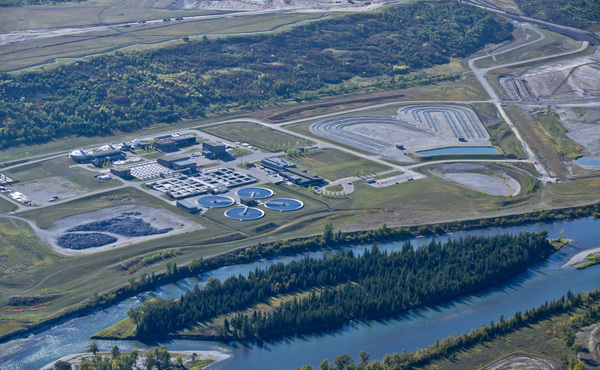For the first time, university researchers are working side-by-side with municipal operators to advance wastewater treatment technologies and knowledge that will lead to cleaner water, a better protected ecosystem, and improved public health.
On March 17, the University of Calgary and the City of Calgary unveiled the $38.5-million Advancing Canadian Wastewater Assets (ACWA) facility at the Pine Creek Wastewater Treatment Plant. An idea conceived more than 15 years ago through the vision of a group of world-class scholars, ACWA is the only fully integrated, fully contained university research facility located within an operating industrial wastewater treatment plant in the world.
“There is no other facility like this and we expect it to offer ground-breaking water research with global impact,” said Elizabeth Cannon, president of the University of Calgary. “It is a place where researchers, practitioners, and industry can work together to solve important problems facing cities everywhere. It represents a new way of doing basic and applied science; a way that results in true discovery and innovation that benefits society as a whole. Research of this magnitude would not have been possible without our partnership with the City of Calgary and the support of the provincial and federal governments.”
ACWA was awarded $10.4 million in funding from the Canada Foundation for Innovation and a matching amount from Alberta Innovation and Advanced Education.
It’s fitting that this launch coincides with World Water Day 2015 on March 22 as ACWA’s purpose is closely tied to this year’s theme of Water and Sustainable Development. Research done at ACWA will result in wastewater treatment technologies that remove existing and emerging contaminants to improve ecosystem and human health, creating clean, sustainable sources of water locally and globally.
Unique in the world, the ACWA site includes 3.8 kilometres of naturalized, experimental streams that replicate real-life water situations and enable research that cannot currently be performed anywhere else. Their size (320 metres each), number (12), and connectivity to the city plant allow researchers and trainees to study the effects of actual wastewater effluent on living ecosystems in real time and to influence decision-making for the City of Calgary’s operational infrastructure improvements.









